The Ultimate Guide to Sailing like a New Englander
41 tips and tricks to take you from a hopeless beginner to a salty dog (or at least help you bluff your way through August on the Vineyard).

There are definitely worse ways to spend an afternoon. / Photo by Alison Langley
Before God and Neptune, we’ll say this: New England is one of the best places in the world to be a sailor, with fair winds from Maine all the way down to Block Island. Culturally, the legacy of sailing is baked into our regional DNA: Consider the whaling fleets captured in Herman Melville’s Moby-Dick, and the images of a wind-blown JFK cruising aboard the Victura off Cape Cod. Even in the city, you only have to walk along the Charles on a breezy summer day and see the little white sails crisscrossing the river to know it’s a tradition that’s alive and well. But if you’ve never so much as stepped foot on a sloop, where and how do you even start?
Sailing, for all its mystique and terminology, is the inheritance of every New Englander—and it’s easy enough to figure out without going broke or risking life and limb. Boston and its surroundings are full of places where you can learn the basics of how to read the wind, fill the sails, and take to the sea. So whether you’re a landlubber or an old salt, read this guide and get ready to hoist the mainsail. Then just pray for wind.
Anatomy of a Sailboat
A glossary of words you need to know before you hop aboard.
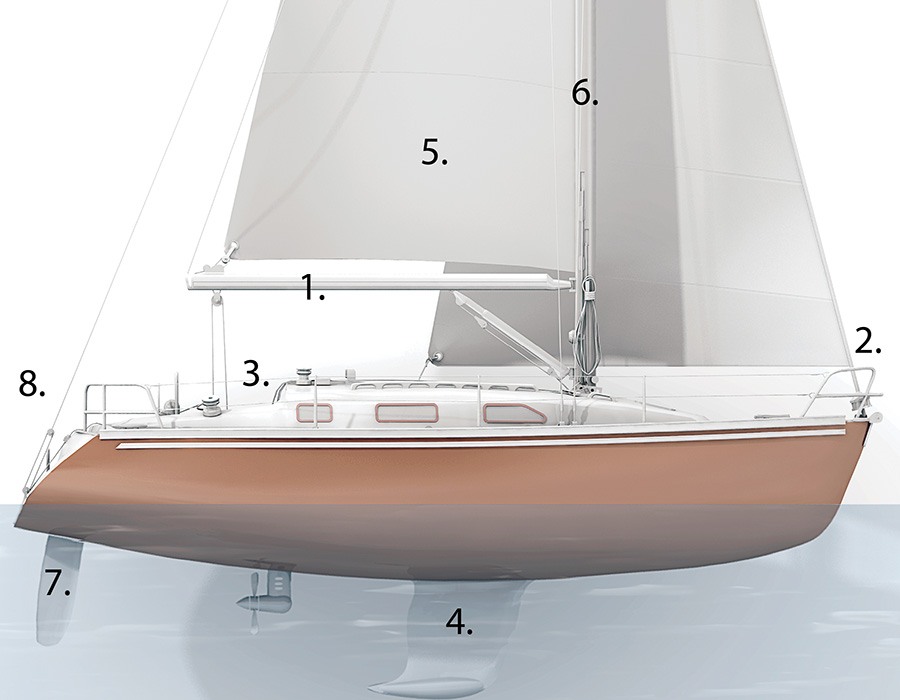
Illustration by Bryan Christie Design
Boom (1): The pole that attaches to the bottom of a sail.
Bow (2): The front of a boat.
Cockpit (3): The open well where the helm—a wheel or tiller—is located.
Keel (4): A weighted fin attached to the bottom of the boat to keep it stable.
Mainsail (5): The principle sail on the main mast.
Mast (6): That really tall thing in the middle of the boat that the sails are attached to. (Sometimes there’s more than one, in which case the tallest is called the mainmast.)
Rudder (7): An underwater blade at the stern that steers the boat.
Stern (8): The back of the boat.
Deck Fluff: Someone whose presence on the boat serves a mostly decorative function.
Halyard: The line that hoists a sail.
Irons: When your boat is pointed straight into the wind, and therefore not moving.
Jibing: When you bring the stern of the boat through the wind. (The opposite of tacking.)
Line: Rope cut for a specific task.
“Ready about!”: What you yell before you tack. (When you jibe, yell “Jibe ho!”)
Reefing: When you shorten the sails, typically to deal with rising winds.
Sheet: The line that controls the sail, bringing it in and out.
Tacking: When you bring the bow of the boat through the wind and change direction.
Winch: A mechanical device that assists in taking in or letting out line.
Get into Gear
The right stuff to buy for any sailor.
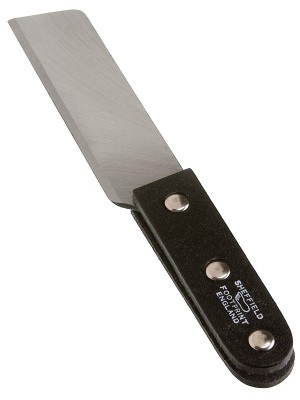
1. For the Beginner
A fancy piece of equipment just has a lot of ways to break. That’s why the Sheffield Footprint hacking knife is so great—it does one thing and it does it better than a pricey multi-tool ever could.
$31.50, affinitytool.com.
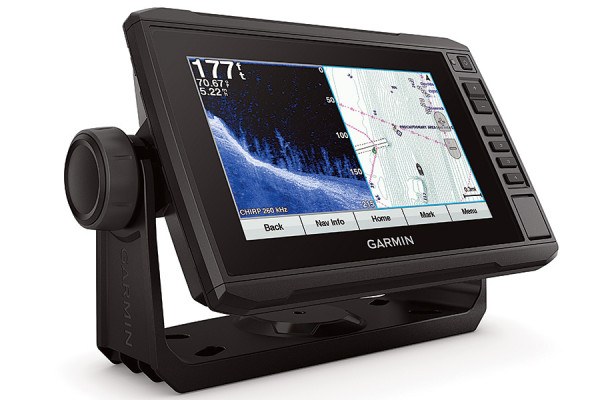
2. For the America’s Cup Wannabe
You can’t win a race if you don’t know where you are. This entry-level Garmin chartplotter will keep racers off the rocks and help them tack their way to victory.
$699, birchmarine.com.

3. For the Gentleman Sailor
In a previous era, he (definitely a he) would have used terms like “old sport.” He’s the reason Sperry—headquartered right here in Massachusetts—invented customizable Topsiders.
$120, sperry.com.
Peter Goulding (Knife); Courtesy photos.
Where Can I Learn to Sail?
How to find the right school for you.
Community Boating
Located right on the Charles River next to the Longfellow Bridge, this local institution has been turning land lovers into sailors since the 1930s.
Boston, community-boating.org.
Black Rock Sailing School
Want to learn how to sail bigger boats, and maybe take ’em a little farther than the harbor’s edge? This is the place for you.
Boston, Marblehead, and Warwick, RI, blackrocksailingschool.com.
The Wooden Boat School
It takes more than four hours to drive there, but you can learn everything from the basic elements of sailing to navigating your first ocean cruise—all on a traditional wooden boat.
Brooklin, ME, thewoodenboatschool.com.

Photo by Alexander Kirch/Getty Images
Ask an Expert
Senior editor and seasoned seaman Thomas Stackpole, who’s crewed boats from Camden, Maine, to the Panama Canal, answers your most pressing questions about getting under way.
Sailing seems…confusing. Isn’t it pretty hard to learn how to do?
Learning how to sail can feel like taking on a new language, but the basics are pretty simple: Figure out where the wind is coming from and try to keep the sails full. From there, it’s just a question of experimenting and seeing what works. The key when you’re starting is to pick days when there’s not too much wind and build your comfort level in places where you can’t do too much damage to your or anyone else’s boat.
Does sailing have to be snobby?
Looking across the harbor at what someone else is doing wrong is always good sport, but despite its elitist reputation, sailing doesn’t have to be prohibitively expensive and is a great way to spend a day in the sun. In other words, it should be for everyone.
Are there rules of the road when you’re sailing? How do people avoid collisions?
There are lots of rules about who has the right of way, but sailboats typically trump motor boats (that said, never play chicken with a ferry). A good rule of thumb is whoever has the more maneuverable boat should get out of the way.

Photo by Trevor Adeline/Getty Images
Is there a cure for seasickness?
Death, or Dramamine. If neither of those is at hand, however, get on deck and keep your eyes fixed on the horizon. It’s an old sailor’s remedy, and while it’s not a sure-fire one, it has received some scientific support.
Are there any rules when it comes to naming a boat?
While there’s no right way to name a boat, there are plenty of wrong ones. Before you paint anything on the stern, imagine how you’d feel calling an S.O.S. from Knot a Dream. (Note: real boat name.) Also, other boaters will know you by your vessel’s name, and if it’s something like Daddy’s Toy, you might not be sending the right message. As a rule, avoid nautical puns—the chance you’ll think of a new one is slim. Knot a good idea. (See?) Do some research and don’t be afraid to be a bit earnest.
Can I really just drink all day long when I’m sailing?
You may have heard legends of drunken sailors, but we don’t necessarily recommend it. Not only is Massachusetts’ legal limit .08—the same as it is on land—but you run the risk of alcohol-induced dehydration and heatstroke, especially on a sunny day. There’s nothing wrong with having a drink while under way, but save the lion’s share for when you’re safely back on the mooring—or better yet, the dock.
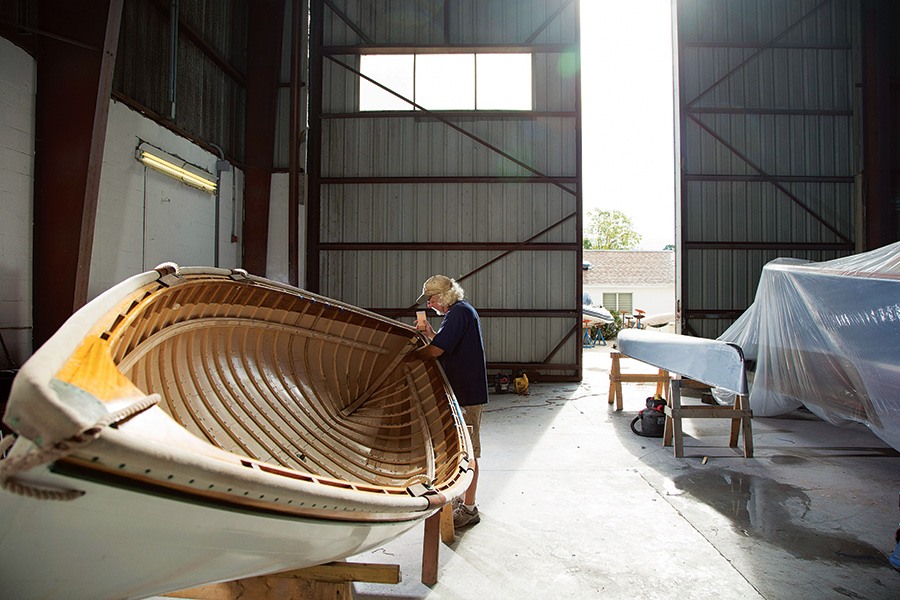
Photo by Gary John Norman/Getty Images
Want to Be Captain for a Day?
Where to rent the right boat—at the right price.
$20 an hour (beginner)
Courageous Sailing on Jamaica Pond
Renting a 17-foot day-sailor on this cozy pond is the perfect way to get comfortable on the water. The winds are shifty, which keeps things interesting, but you can’t get into too much trouble.
$125 per day (intermediate)
Boston Harbor Sailing Club
Ready to feel the wind in your hair? The 26.5-foot Soling is one of the fastest little racing keelboats around, which means two things: It’s a great boat to learn on and it’s a lot of fun to sail.
$10,200 per season (Cruising 40 level)
Boston Sailing Center
If you’re up for adventure, this top-level membership grants you access to a fleet of seriously nice sailboats—from Sonars to seaworthy cruising boats—for any and all ocean excursions.

Photo by Denis Tangney Jr.
Renting vs. Buying
Breaking down the boat lover’s eternal conundrum.
RENTING
PROS:
You won’t spend the next nor’easter lying awake wondering if your boat is okay.
You can try out different kinds of boats and decide what you like best.
You’re almost definitely going to spend less money this way.
CONS:
You have to plan ahead. If you wake up on a perfect summer day with an urge to sail, you better have something booked.
You may end up sailing something with an embarrassing name.
Renting means one thing: You have to return it on time. And if the wind dies, you’re paying for it.
BUYING
PROS:
Want a sleek racing machine? Or a comfy coastal cruiser? You can pick the boat that perfectly fits the kind of sailing you want to do—and fit it out to suit your every need.
You can keep pictures of your new ride on your desk at work.
You’ll always have an excuse to buy the latest gear.
CONS:
Afternoons spent puttering on the boat, trying to fix that one last goddamn thing.
You almost definitely won’t use it as much as you thought you would.
The ultimate realization that you could have simulated the entire experience by walking to the harbor and tossing in a suitcase full of money.

From the feel of the teak deck to the sound of the water against the planks, there’s nothing quite like a wooden boat. / Photo by Alison Langley/Getty Images
Why Wood?
It’s like buying art, only art you can sail.
Admittedly, wooden boats are a bit of a luxury item, like buying an antique cherry desk or a classic car. But for fanatics, the five-to-seven-figure price tags are worth it. For some, it’s the appeal of owning something with a rich history. For those who choose to build a new classic at one of the local yards, keeping the New England tradition alive, it’s the way a wooden boat looks and feels in the water that makes it worth the extra cost. Want to see what all the hype is about? Check out the “Lighter, Stronger, Faster” exhibit at the MIT Museum, which celebrates the legacy of MIT alum and master yacht builder Nathanael Greene Herreshoff, who produced six America’s Cup winners over his 75-year career.
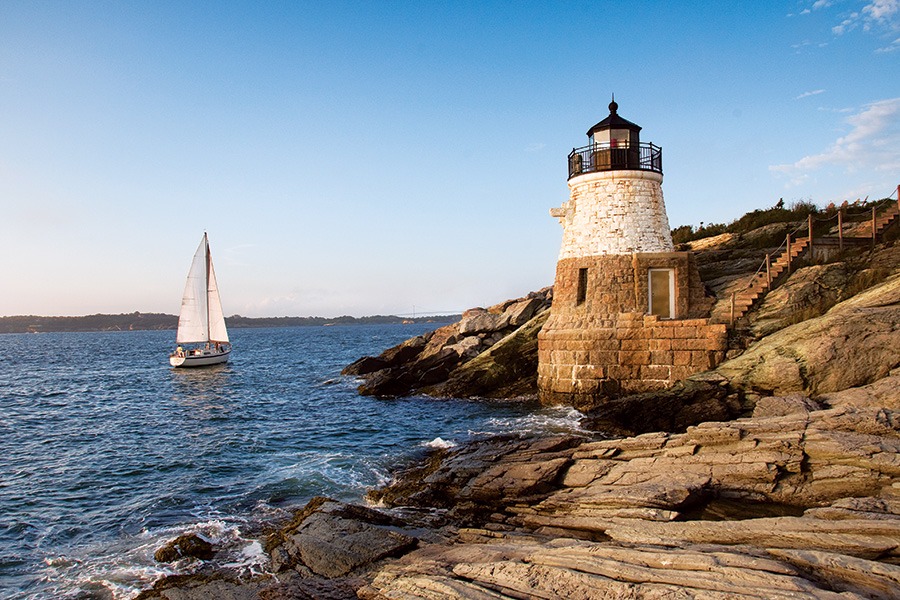
You’ll know you’ve made it to Newport, Rhode Island, when you see the iconic Castle Hill lighthouse. / Getty Images
Sail Away
Pack your bags and earn your sea legs with these three coastal adventures.
If You Have…One Night
East to the Harbor Islands
You don’t need to sail to the Azores to feel like you’re getting away. Sometimes dropping anchor a stone’s throw from home is perfect. You can spend the day navigating around the Harbor Islands, riding the current, then either tie up at a mooring near Spectacle Island or head down to Hull to find a slip for the night.
If You Have…Two Nights
North to Cape Ann
Take a summer Friday and head up the coast past Gloucester and Rockport to pick up a mooring at the Annisquam or Ipswich Bay Yacht Club, where you can have a drink on your boat and enjoy the sunset. On day two, rent a slip in Salem or Marblehead on your return trip home and walk through either town to grab a well-earned Dark ’n Stormy.
If You Have…One Week
South to Naushon and Newport, Rhode Island
For a trip that combines one of the best-kept secrets in New England sailing and one of the iconic centers of it, head south of Vineyard Sound to the little island of Naushon and then onto Newport, Rhode Island. Getting down the Cape is a bit of a trek, so consider a night in Duxbury before you sail through the Cape Cod Canal and Woods Hole. Drop your hook in Tarpaulin Cove on Naushon, which is owned by the Forbes family and is almost entirely undeveloped. Next, return to civilization with an easy sail to Newport, the region’s most famous yachting town. Calling ahead for a slip at the Newport Shipyard & Marina will be well worth the effort.

iStock
Mind Your Manners
Most boats are small. Here’s how to keep things civil.
DO
Take your shoes off when climbing aboard—or at least make sure they’re clean!
DON’T
Wear a captain’s hat (even if you are the captain).
DO
Bring a six-pack or a bottle of wine if you’re hitching a ride. It’s just like visiting someone’s house for dinner.

iStock
DON’T
Bring a cheese platter, a game of Jenga, or anything that needs to stay level, unless you want to be scrubbing chèvre off the floor.
DO
Pour the first shot of rum overboard for good luck.
DON’T
Whistle. Superstitious sailors think it brings up the wind, in a bad way.

Celebrate your return to land with a Hurricane in Cape Ann. / Photo by Mona Miri
Can a Sailor Get a Drink Around Here?
Where to find safe harbor—and an ice-cold cocktail.
Boston Harbor
To keep the summer sea vibes going on land, walk the plank over to the Barking Crab for a rum punch and an order of crab cakes.
Cape Ann
After tying up, grab a cold one at the Sea Level Oyster Bar in Salem, or wander up the street to grab a craft brew at Notch.
Newport, Rhode Island
Post up at the Clarke Cooke House’s Midway Bar, right on the harbor, to gawk at beautiful boats and the people who own them.


